| Designer | Dior |
|---|---|
| Year | 1951 |
| Type | Off-the-shoulder couture gown |
| Material | Silk organza over satin |
Princess Margaret wore a cream Dior dress for her 21st birthday commemorations at Sandringham House in 1951. The off-the-shoulder silk gown was created and customised by designer Christian Dior, whom Margaret became closely associated with. The princess was captured in the piece, dubbed one of her favourite dresses, by Cecil Beaton, with the portrait becoming one of the most memorable royal photographs of the twentieth century. The dress has been cited as a part of fashion history, and has been a part of the permanent collection at the Museum of London since 1968.
Princess Margaret originally met Dior during her first trip to Europe. [1] Following his first fashion show in London, Dior put together a special presentation at the Embassy of France for members of the royal family, including Margaret, Queen Elizabeth II, Princess Marina, Duchess of Kent, and Princess Olga of Greece and Denmark. [1] Dior admired the princess's style and described her as "very charming". [1] In terms of dressing, her sister was expected to remain loyal to British brands, whereas Margaret could afford to take bolder risks with fashion. [2] She subsequently became one of his first high-profile English clients. [1] [3] In 1951, Princess Margaret ordered her 21st birthday gown from the Dior's 'Oblique' line, an adaption of the 'Matinee Poetique' design that had been presented in the Spring/Summer collection. [4] [2]
The dress is an embroidered, off-the-shoulder cream couture gown with chiffon sleeves, made of silk organza over satin, and featuring beads, mother-of-pearls, sequins and raffia detailing. [5] [1] [3] The outfit is a two-piece, with the top consisting of boned bodice as well as a dropped shoulder sash. [4] [6] The seven-layer voluminous skirt, which is gathered into a 55 cm waist, has an inner layer of silk, three layers of netting, and two outer layers of organza. [4] During the dress's customisation, Dior asked Margaret if she felt like a silver or gold person; she chose gold. [4] As a result, the front panel is intricately embroidered with gold rhinestones. [4] The use of synthetic materials permitted for specific colors and effects, and was considered a modern choice made by the princess for a royal event. [3] [7] This was Dior's intention, as he aimed to "mark a departure" from the simplistic fashions of wartime years. [7] The raffia elements were in line with trends of the 1950s, with the dress embodying Dior's New Look, which reintroduced feminine features and voluminous skirts in a post-World War II era. [3] [2] Upon viewing the gown, the princess joked that the adornments resembled potato peelings. [7]
Princess Margaret wore the dress to her birthday commemorations, which took place at Sandringham House. [4] She was photographed in the gown by Cecil Beaton for her official birthday portrait; she was captured reclining on a plush red sofa with an ornate tapestry backdrop, wearing a five-strand pearl necklace. [1] [3] [4] The photograph became one of the most famous royal portraits of the twentieth century. [8] The princess rewore the dress two months later on 21 November 1951, where she was the guest of honour at a charity gala organised by the Cercle de l'Union interalliée in benefit of the Hertford British Hospital. [4] The event took place at the Hôtel Perrinet de Jars in Paris, and had "the grandest names of the French aristocracy" in attendance. [4] Princess Margaret accessorised the gown with a Cartier platinum and diamond tiara, a diamond necklace, two bracelets, and evening gloves. [4] The princess later stated that the piece was her "favourite dress of all", keeping the gown for seventeen years before its donation to the Museum of London, which was then based at Kensington Palace. [9] [1] [4]
Princess Margaret, considered a fashion icon, remained a customer of Dior throughout her life, through the tenure of Yves Saint Laurent, transitioning from couture to ready-to-wear. [10] [2] [1] [4] In his autobiography, Dior wrote that Margaret "crystallised the whole popular frantic interest in royalty". [10] Several Dior pieces were marketed 'as worn by Princess Margaret' after her purchase. [10] Katie Frost for Harper's Bazaar , Katie Trotter of Vogue Arabia , Dean Mayo Davies from Another Magazine , and Brigit Katz of Smithsonian magazine all referred to both the gown and portrait as "iconic", with Katz calling the look "the vision of a princess." [1] [11] [3] [10] Beatrice Behlen, curator of the Museum of London, compared the dress's "sweeping lines" to Cinderella's ballgown. [4] Vogue Arabia deemed the dress as one of the 10 most important moments in fashion history. [11]
In 2019, the dress was loaned from the London Museum to the V&A Museum, as part of 'Dior in Britain' exhibition, covering the impact of his 'New Look'. [12] [1] A gala was held in January to mark the exhibit, attended by Princess Margaret's children, Lady Sarah Chatto and David Armstrong-Jones, Earl of Snowdon. [2] The gown was the centrepiece of the exhibit, and had to be restored by curators upon its arrival, with conservator Emily Austin speculating that the wear-and-tear indicated that the gown was "well-loved". [3] Harper's Bazaar called the dress "one of the standout dresses of the show". [1] Upon viewing the exhibition, Another Magazine stated that "the gown wears beautifully the fragile passing of time – it has enjoyed itself, as it should – yet its intricate couture embroidery remains, bulletproof: you get what you pay for". [10]

Sir Cecil Walter Hardy Beaton was a British fashion, portrait and war photographer, diarist, painter, and interior designer, as well as costume designer and set designer for stage and screen. His accolades includes three Academy Awards and four Tony Awards.

Sir Norman Bishop Hartnell was a leading British fashion designer, best known for his work for the ladies of the royal family. Hartnell gained the Royal Warrant as Dressmaker to Queen Elizabeth in 1940, and Royal Warrant as Dressmaker to Queen Elizabeth II in 1957. Princess Beatrice also wore a dress designed for Queen Elizabeth II by Hartnell for her wedding in 2020.
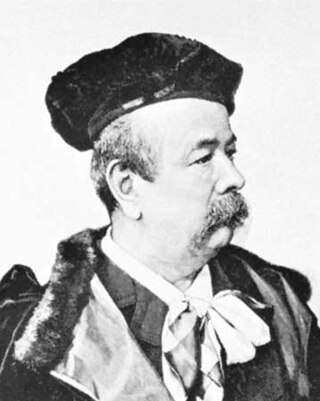
Charles Frederick Worth was an English fashion designer who founded the House of Worth, one of the foremost fashion houses of the 19th and early 20th centuries. He is considered by many fashion historians to be the father of haute couture. Worth is also credited with revolutionising the business of fashion.

Christian Dior SE, commonly known as Dior, is a French multinational luxury goods company that is controlled and chaired by French businessman Bernard Arnault, who also heads LVMH. As of December 2023, Dior controlled around 42% of the shares and 57% of the voting rights of LVMH. In addition, the Arnault family held a further 7% of the shares and 8% of the voting rights of LVMH as of that date.
Mainbocher is a fashion label founded by the American couturier Main Rousseau Bocher, also known as Mainbocher. Established in 1929, the house of Mainbocher successfully operated in Paris (1929–1939), and then in New York (1940–1971).

Elie Saab is a Lebanon-based fashion designer. He started his business in the early 1980s and specialised in bridal couture.
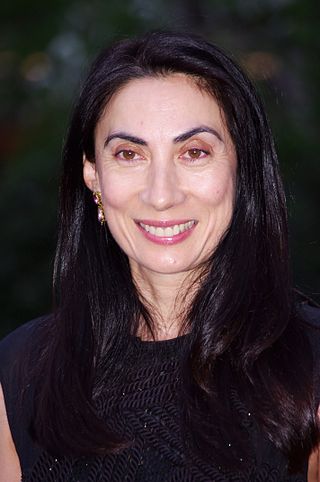
Anh Duong is a French-American artist, actress, and model. She is known for her self-portraits, which she has compared to a visual diary, as well as portraits of significant art collectors and influencers.
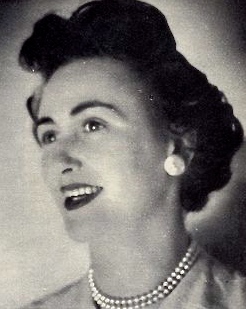
Sybil Connolly was a celebrated fashion designer and global icon known for her innovative use of traditional Irish textiles in haute couture. Often described as "Dublin's Dior", she achieved international repute and success, making her one of the first Irish designers to do so. She was a member of the "Big Three" Irish fashion designers, and was described by former Taoiseach Jack Lynch as "a national treasure."

Tatiana Sorokko is a Russian-born American model, fashion journalist, and haute couture collector. She walked the runways for the world's most prominent designers and fashion houses, appeared on covers of leading fashion magazines, and became the first Russian model of the post-Soviet period to gain international recognition. After modeling, Sorokko worked as contributing editor for Vogue, Vanity Fair and Harper's Bazaar. Her distinct personal style and her private collection of historically important haute couture clothing were subjects of museum exhibitions in Russia and the U.S.
Jose "Pitoy" Reyes Moreno Jr. was a Filipino fashion designer and one of the earliest advocates of the Maria Clara gown. He is much regarded by the Asian fashion field as the Fashion Czar of Asia. He established the spotlight on Filipino fashion in the world artistic fashion scene during the 1960s until his retirement, paving the way for young Filipino fashion designers in Europe, the Middle East, the Americas, and other parts of Southeast Asia.

Lady Diana Spencer's bridal gown was an ivory silk taffeta and antique lace gown, with a 25-foot (7.6 m) train and a 153 yards (140 m) tulle veil, valued then at £9,000. It was worn at Diana's wedding to Charles, Prince of Wales in 1981 at St Paul's Cathedral. It became one of the most famous dresses in the world, and was considered one of the most closely guarded secrets in fashion history.

The wedding dress of Princess Margaret, the sister of Queen Elizabeth II, was worn at her wedding to photographer Antony Armstrong-Jones on 6 May 1960 at Westminster Abbey.

Catherine Middleton wore a blue Issa dress during the photocall for her engagement to Prince William of Wales on 16 November 2010, at St. James's Palace. The silk wrap dress matched her engagement ring, and sold out soon after its debut. It contributed to the start of "the Kate Middleton effect", Middleton's impact on the fashion industry, and sparked a trend in "little blue dresses".
The wedding dress of Princess Beatrice of York worn at her wedding to Edoardo Mapelli Mozzi on 17 July 2020 was designed by the British fashion designer Norman Hartnell, who had originally created the gown for Queen Elizabeth II, the bride's grandmother, in the 1960s. The original dress was altered by the Queen's dressmaker, Angela Kelly, and British fashion designer, Stewart Parvin, who remodelled and fitted the dress for Princess Beatrice.
The wedding dress worn by Carolyn Bessette at her wedding to John F. Kennedy Jr. on September 21, 1996 was designed by Narciso Rodriguez of Cerruti. The wedding took place on Cumberland Island in the U.S. state of Georgia.
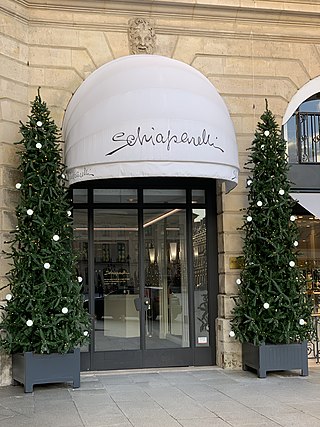
Maison Schiaparelli is a haute couture house created by avant-garde Italian fashion designer Elsa Schiaparelli in 1927, and moving towards luxury ready-to-wear after being bought in 2007 by Diego Della Valle. The house is famous for its eccentric fashions, the use of Surrealism in its collections, its sense of humour, the "shocking Pink" color, gender crossing, and its use of human anatomy depictions, among other unconventional themes.
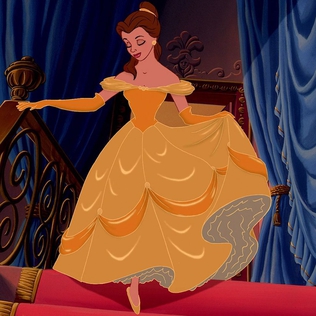
In the ballroom scene from Disney's 1991 animated film Beauty and the Beast, during which the fictional character Belle dances with the Beast to the film's titular song, Belle wears an opulent golden off-the-shoulder ball gown with a voluminous skirt. Although Beauty and the Beast is set in 18th-century France, the dress's streamlined, anachronistic design borrows inspiration from several different fashion eras, with some of its elements centuries removed from its historical setting.
Sohee Park is a South Korean womenswear designer based in London, United Kingdom. She is known for her clothing label Miss Sohee, which specializes in couture.

The oyster dress is a high fashion gown created by British fashion designer Alexander McQueen for his Spring/Summer 2003 collection Irere. McQueen's design is a one-shouldered dress in bias-cut beige silk chiffon with a boned upper body and a full-length skirt consisting of hundreds of individual circles of organza sewn in dense layers to the base fabric, resembling the outside of an oyster shell. According to McQueen, the gown took a month's work for three people, who cut and assembled all the pieces individually. In addition to the original beige dress, a version with a red bodice and the ruffled skirt in rainbow colours was also created. The beige and red versions appeared in the Irere runway show, and were photographed for magazines to promote the collection.